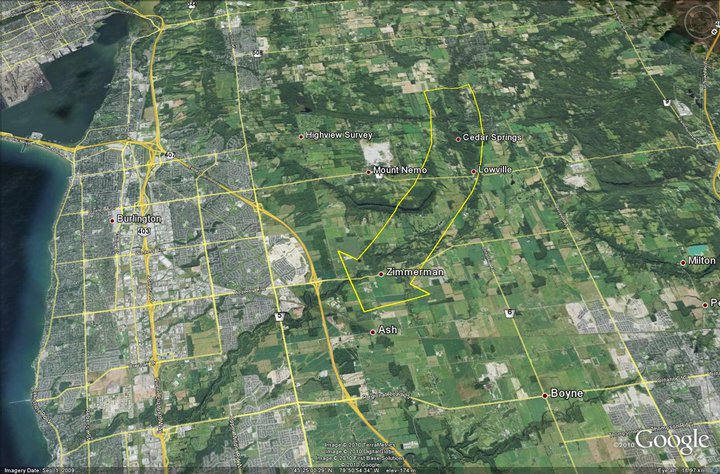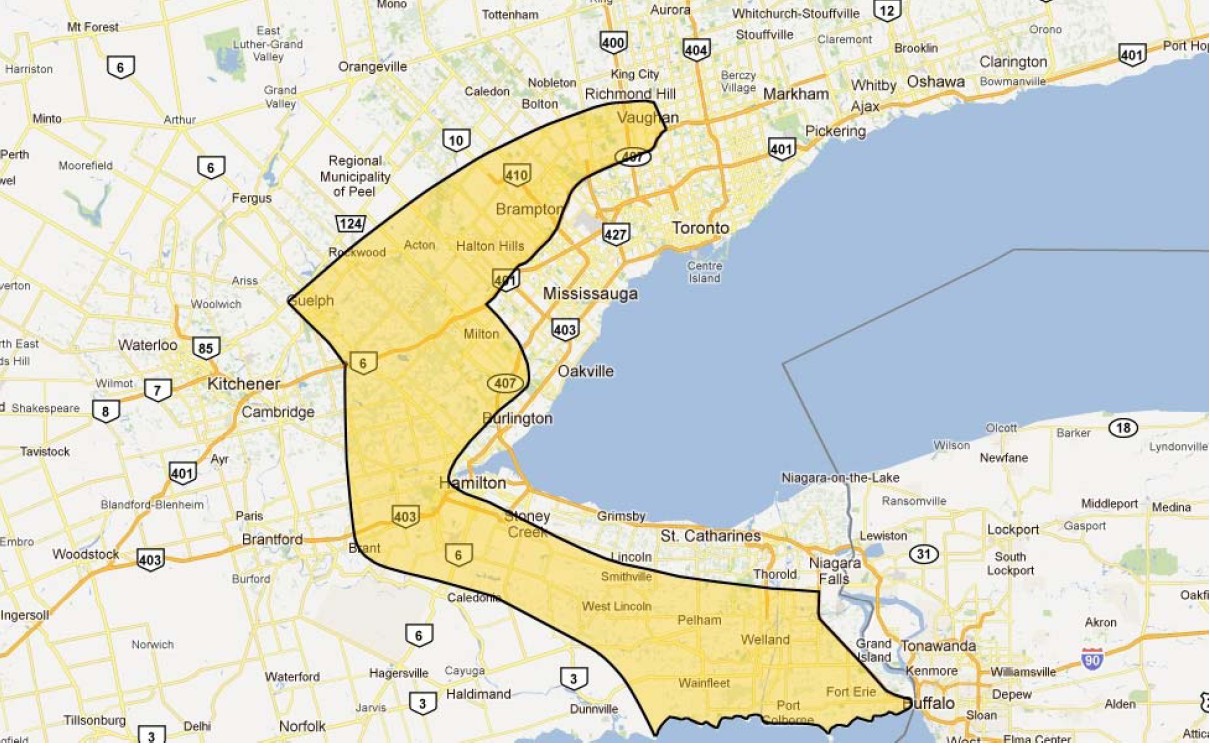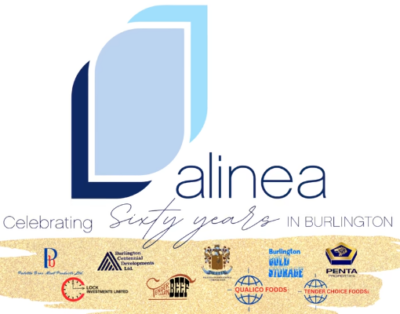By Staff
 BURLINGTON, ON September 29, 2011 – For Burlingtonians the two issues are the hospital and the Escarpment – one at the bottom and the other at the top of the city. The citizens have heard what each of the political parties has to say – but no one is really sure that those politicians will deliver on the promises or on the priorities as some politicians are calling them.
BURLINGTON, ON September 29, 2011 – For Burlingtonians the two issues are the hospital and the Escarpment – one at the bottom and the other at the top of the city. The citizens have heard what each of the political parties has to say – but no one is really sure that those politicians will deliver on the promises or on the priorities as some politicians are calling them.
Thus it is good to hear from an interest group that has one objective – No highway here – thank you. The Stop the Escarpment Highway Coalition

This is the part of the country side the environmentalists want to keep the highway makers away from.
(SEHC) has been consistent in their opposition to any new road. And they bring with them 13 organizations with 8500 members on the mailing lists – all a part of the coalition. In the world of politics – this is called clout.
So here is what they have to say about the position the politicians have taken:
Plans to build a costly Horseshoe Mega‐highway from Fort Erie to Vaughan that will saddle Ontario taxpayers with an estimated $16 billion bill are being fought by a growing coalition of citizens’ groups. The Stop the Escarpment Highway Coalition (SEHC), with 11 member groups from Niagara to Oakville, will now be acting in concert with Sustainable Vaughan and Concerned Residents Against Superhighway in Halton Hills (CRASHH).
While Transportation Minister Kathleen Wynne has announced that Ontario’s Liberal government would not move forward with part of the planned highway from Niagara to North Burlington, other portions of the highway are still on the table and background work and environmental assessments for all portions are still ongoing. As well, opposition leader Tim Hudak has said he would build the highway if elected as Premier.
“We aren’t fighting highways, we’re fighting a transportation planning philosophy that only looks at highways,” says SEHC spokesperson Geoff Brock, adding that efficient, modern, multi‐modal transportation options across Ontario need to be considered including rail, shipping, and many types of public transit. Brock notes, plans for the Horseshoe Mega‐highway, have been announced in stages, with costs relayed separately for each portion, so it hasn’t aroused the public concern that it should have.
Yet, throughout the entire proposed route of the superhighway, citizens’ groups, and in many cases, local and Regional governments have risen up to oppose it and advocate for a better way.
“The problem is the mandate and focus of the Ministry of Transportation precludes this type of planning,” says Brock. “Traditionally, the Ministry has been focused on building and maintaining a road‐based, car and truck focused transportation system. Ministry staffs know a lot about roads but we need experts who understand integrated transportation networks that include shipping, rail, light rail, buses and subways,” says Brock.

This is the part of the province that all the huffing and puffing is about when Burlingtonians talk about protecting the Escarpment. The province has wanted to build a new highway from Buffalo, New York all the way around the western end of Lake Ontario and into the industrial parts of the province North of Toronto. The good folks of Burlington have no problem with that idea – they just don’t want a highway built through the Escarpment. The Stop the Escarpment Highway Coalition thinks the province needs to re-think transportation and see beyond just building highways.
In a global economy, Ontario has to compete with places that are investing heavily in fast, cost‐effective, multimodal transportation systems for people and goods, Brock notes. “We need a transportation plan that’s faster and cheaper than one based on cars,” says Brock. He cites a recent study that showed Toronto’s commute times are quickly becoming the world’s longest while cities like Barcelona, that have just completed a massive public transit system, have the world’s shortest.
“We can’t afford to be left behind,” says Susan McMaster of Citizens Opposed to Paving the Escarpment (COPE), a Member of the SEHC. She notes that the creation of Metrolinx, and increased Provincial funding for GO expansion, are steps in the right direction but those plans are limited to the Greater Toronto to Hamilton Area (GTHA).
“Many people are commuting from the Kitchener, Brantford and Niagara areas to the GTHA. A lot of goods are moving through the border in Windsor and Sarnia to all parts of the Province. We need a greater vision for transportation in Ontario that will keep people and goods moving now and into the future,” says McMaster, citing the escalating costs of fossil fuels as a major reason to focus on creating a multi‐modal transportation network across the Province.
The cost of building the superhighway is also a major concern, says McMaster. With the world’s economy in a tailspin the Province is under a lot of financial pressure and there is only so much money to go around. “Funding this proposed highway will cost billions of taxpayer dollars. And given current budget constraints, every dollar spent on new highways is a dollar that won’t be spent on building the kind of efficient, integrated transportation network that would make us competitive,” she says.
COPE, which has been fighting the construction of a Niagara Escarpment highway for years, is also deeply concerned about the new and expanded quarry operations the highway would generate. “By Provincial policy, aggregate must be sourced as close to the area under construction as possible. That means a lot more and bigger quarries; a lot more blasting in the Niagara escarpment and adjacent areas,” she says. This is a large part of what the Nelson Aggregate OMB hearing is all about.
Progressive Conservative candidate Jane McKenna didn’t even know what the Nelson Aggregate hearing was even about – which is kind of scary.
Brock argues that: “Until we hear the announcement that the government of this Province is committed to creating a Province‐wide, multi‐modal transportation network, SEHC will continue to expand our membership and our efforts to make this necessary change happen,” he says.
SEHC also wants the Federal Government to step up to the plate. “The bottom line is the Province can’t do it alone. The Federal Government has an important role to play
especially in terms of providing funding but also in helping to integrate, rail and shipping, and in easing congestion at borders. They need to step up to the plate, like other federal governments have around the world, and recognize that having an efficient, multi‐modal transportation network in Ontario is in the national interest, says McMaster.
“Let’s face it, we can’t get our economy moving if people and goods aren’t,” she says.
[Facebook]


















